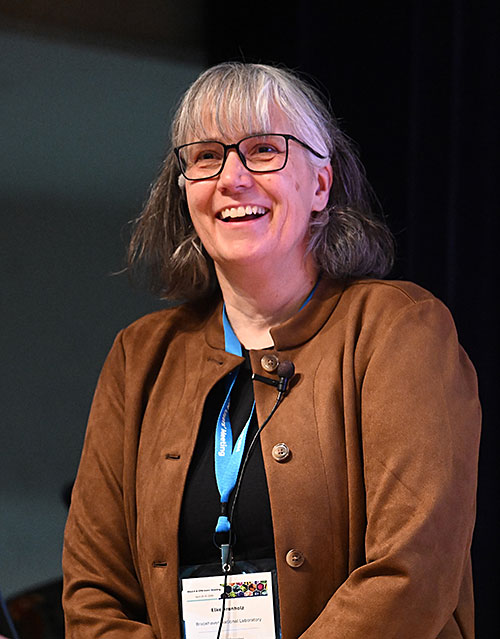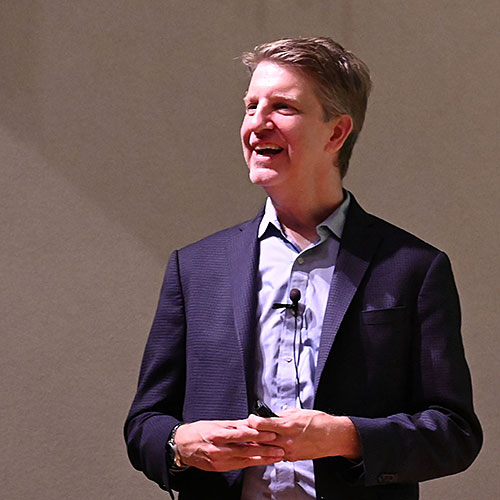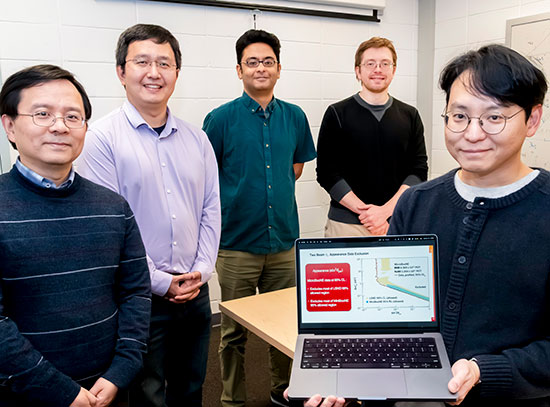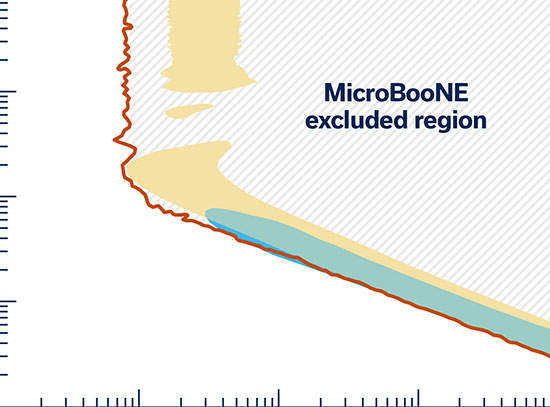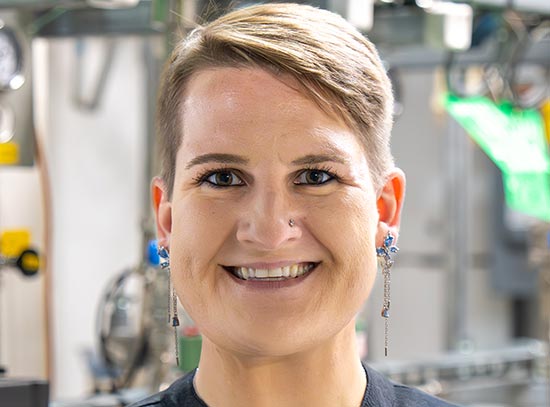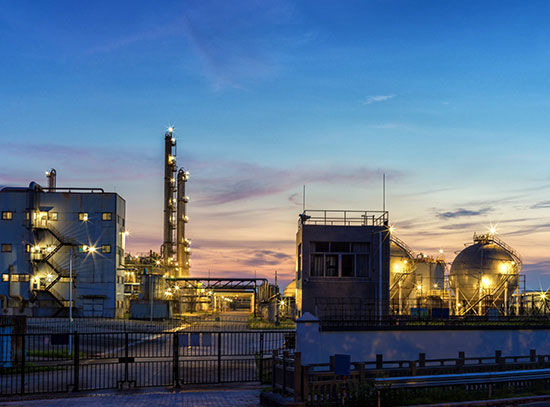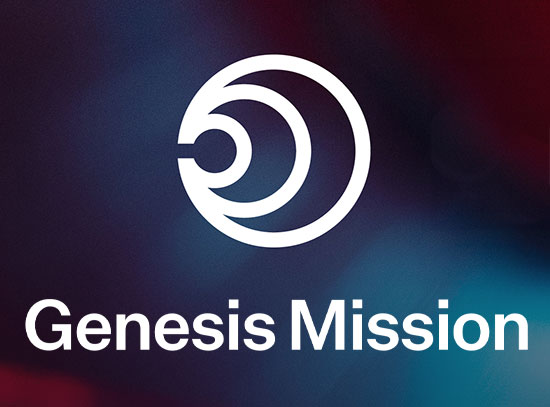Accelerating Discovery Together
Users and staff explore new ideas and shared ambitions at the annual NSLS-II & CFN Users' Meeting
May 27, 2025
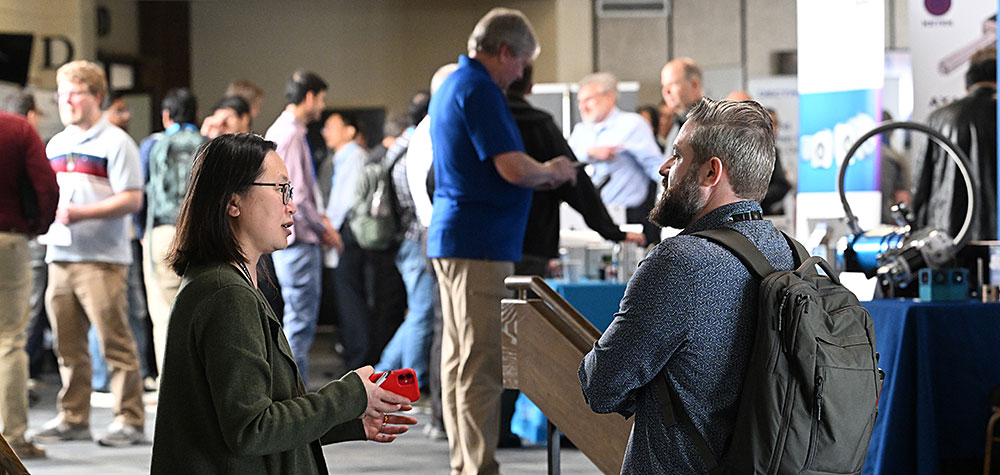 enlarge
enlarge
Conversations spark and networks form as users, vendors, and Lab staff gather on the bustling exhibitor floor between workshops.(Kevin Coughlin/Brookhaven National Laboratory)
The strength of any user facility lies in its vibrant research community and the diverse experiments they conduct across a variety of scientific disciplines. At the U.S. Department of Energy’s (DOE) Brookhaven National Laboratory, this collaborative spirit thrives within two neighboring DOE Office of Science user facilities: the National Synchrotron Light Source II (NSLS-II) and the Center for Functional Nanomaterials (CFN). Recognizing the invaluable perspectives of this community, the Users Executive Committees (UECs) and staff come together each year to host a joint users’ meeting. This annual gathering serves as a critical forum for collaboration, focused on enhancing the capabilities of these facilities to meet the evolving needs of the community. This year, the discussions largely centered on the future of these facilities and the emerging scientific frontiers they aim to support.
“The user community is the lifeblood of these two facilities,” said Brookhaven Lab Director JoAnne Hewett in this year’s opening remarks. “They’re both an extremely important part of our laboratory. We can be proud of what we have accomplished together.”
The meeting, held at Brookhaven National Laboratory from April 28-30, featured 11 workshops spanning synchrotron science, nanoscale science, materials science, and biological sciences. It also included a vendor fair with over 40 exhibitors, a poster session showcasing more than 70 posters (including 27 from local high school students), and a plenary session with updates from Laboratory leadership and the DOE Office of Science. The plenary also included a keynote talk on high-strength natural materials by Yale University’s Liangbing Hu and an awards presentation.
Several workshops highlighted the integration of emerging technologies, such as artificial intelligence (AI), automation, and advanced data collection, along with updates and discussions on new beamlines, tools, and capabilities. These sessions brought about valuable insights on the evolving needs of the user community and how they fit into many of the active projects that are reshaping the future of these facilities.
NSLS-II celebrates 10 years of user operations and a bright future ahead
2025 marks a significant milestone for NSLS-II. In 2024, the light source celebrated a decade since achieving first light, and this year, it commemorates 10 years since welcoming its first users in 2015. Over the past decade, NSLS-II has steadily expanded its user community, adding cutting-edge beamlines and supporting a broader spectrum of scientific research. In 2024 alone, the facility hosted a record 2,340 users — with 30% visiting for the first time. That same year, NSLS-II researchers published more than 630 papers, with half appearing in journals carrying impact factors of seven or higher.
2024 also welcomed NSLS-II Director Elke Arenholz, who took to the stage during the plenary session to reflect on her first year at the facility and outline her ambitious visions for the future. She praised the productivity and capabilities of NSLS-II, highlighting the remarkable dedication of its staff and the strong bonds forged with the user community.
“One thing that made me fall in love with synchrotron science is the community and the teamwork,” said Arenholz. “Nobody at a synchrotron works alone to pull off the impressive work that we do. Users and staff work really hard, together, to enable and perform outstanding research and support great scientific tools.”
Arenholz gave plenary session attendees a peek at some of the new tools and capabilities being developed to expand NSLS-II's diverse scientific portfolio. The NEXT-III project, which is currently underway, aims to build 8 to 12 new beamlines and any necessary infrastructure upgrades over the next decade, starting with the High Resolution Powder Diffraction (HRD), Quantitative Cellular Tomography (QCT), Advanced Nanoscale Imaging (ANI), and Tender X-ray Nanoprobe (TXN) beamlines. There were several workshops during the meeting exploring these new beamline concepts and their progress.
While these upcoming beamlines will offer new ways to explore samples, NSLS-II was also driving innovation through a growing number of proposals for multimodal experiments that combine diverse techniques and beamlines to extract even more valuable data. Complementing this is the increasing adoption of AI and machine learning to optimize experimental workflows.
“If you have a science question, I’m very confident that there is a tool we have here that will help you find an answer,” remarked Arenholz.
Another exciting topic discussed at this meeting, a cornerstone for NSLS-II’s future, is a facility upgrade spanning “from source to sample.” By further developing the accelerator, beamline optics, sample environments, and detectors, as well as data handing, processing, and analysis capabilities, NSLS-II can expand its range of experimental tools, supporting more diverse and multimodal sample environments that reflect real-world scenarios. These advances will not only benefit the current user community but also open the door to new communities seeking these tools. Key groups at NSLS-II are planning scientific workshops to further explore some of the current concepts for this upgrade and lay out a path for what’s to come in the years ahead.
CFN reinforces the strength of community for scientists
CFN Director Chuck Black provided an insightful overview of the facility’s growing user community. In the past 12 months, CFN welcomed a record 719 users, marking a 10% increase from the previous year. Notably, 42% of these users were first-time visitors, reflecting the Center’s growing reach. This vibrant community also includes a significant number of early career scientists. Approximately half of them are students, 20% are postdoctoral researchers, and the remaining 30% are faculty and scientific professionals.
Black offered these early career scientists some words of encouragement drawn from his own journey through the highs and lows of a research career.
“Science can be incredibly challenging. It’s hard work, full of setbacks and moments of doubt. It can be tough to pick ourselves up, but staying optimistic is essential,” Black said. “Much like a sports team after a tough loss, we need to come together and support each other. That’s why user meetings and facilities like ours are so important. They foster a culture of collaboration that’s as vital as the cutting-edge instruments we build and the expertise we share. This sense of community is what sustains us when things get hard.”
Black announced organizational changes aimed at aligning staff with two primary research areas: the AI Accelerated Discovery group, which will drive cross-cutting CFN efforts to apply AI to nanoscience, and the Electronic Nanomaterials group, which will focus on microelectronics, including extreme ultraviolet lithography (EUV) patterning materials and processes.
CFN also continues to expand its 2D materials research with a growing suite of advanced fabrication and characterization tools designed to complement its Quantum Material Press (QPress) facility. The QPress, a robotic system at the heart of CFN’s microelectronics efforts, carefully exfoliates layered materials, like graphite, into individual atomic sheets and reassembles them into novel configurations. This process enables scientists to engineer custom electronic properties that don’t naturally exist in these materials. With more than 50 users annually, the QPress is a vital resource for the scientific community.
Reflecting on CFN’s achievements over the past year, Black reemphasized the critical role of collaboration and community in scientific discovery, underscoring their importance to the Center’s vibrant research culture.
“Bring us your best ideas and tell us how we can help you. Our collaborative culture is an infrastructure. It can sustain us when things get difficult. It’s a really exciting time for nanoscience. There are also big challenges across the board. We need scientists to solve them, and we’re going to do that by working together.”
A celebration of science
After updates from Brookhaven leadership and an engaging keynote lecture, users and staff virtually welcomed the DOE Office of Science’s Bindu Nair, associate director of science for basic energy sciences (BES). After giving the audience a broad overview of the Office’s structure and how they support user science, she shared some of BES’s current science focuses, which included AI and autonomous science, microelectronics and quantum information science, critical materials, and energy generation, conversion, transmission, and storage.
“DOE is the largest funder of physical sciences in the United States,” explained Nair. “We are trying to understand the generation, conversion, transmission, and storage of energy at the fundamental level. To do that, we need to discover, design, and control materials and chemical systems across huge scales of time and space, which requires a very fundamental understanding of atoms and molecules.”
Nair also discussed future facility upgrades as part of BES’s sustained investment in the Nation’s scientific infrastructure. Alongside projects at other national labs, she called attention to NSLS-II’s Experimental Tools II (NEXT-II) and NEXT-III beamline projects and CFN’s role in the Nanoscale Science Research Centers Recapitalization Project.
At the end of the plenary session, the focus shifted to the people supporting the community and making this meeting possible. The UEC recognized several outstanding users and staff for their contributions to the community and to great science.
This year, the Julian D. Baumert Ph.D. Thesis Award was presented to Connor Occhialini from the Massachusetts Institute of Technology for research conducted on his thesis project entitled “Optical and core-level X-ray spectroscopy of correlated two-dimensional materials.” The NSLS-II UEC Community Service Award was presented to Nancye Wright, NSLS-II’s longstanding proposal coordinator. This award was given in appreciation of her outstanding service, innovation, and dedication to both NSLS-II and the user community. The newly created NSLS-II UEC Outstanding Beamline Scientist Award was presented to Matthew Whitaker, a partner user beamline scientist for the high pressure multi-anvil program at the X-ray Powder Diffraction (XPD) beamline at NSLS-II. This award commemorated his exceptional efforts and contributions that have improved the quality of science for the NSLS-II user community. Additionally, this year’s poster session award winners and their teams were recognized by the subcommittee chairs for their exceptional presentations. The UEC also took this opportunity to wish outgoing members well, welcome new members, and congratulate members serving in new roles, including recently elected UEC Chair Wilson Chiu.
As the meeting wrapped up, it served as a powerful reminder that the future of science is as much about community as it is about technology. By bringing together users, staff, and students from diverse fields, NSLS-II and CFN are not just advancing science but also creating a collaborative environment where groundbreaking discoveries can flourish.
The two Users’ Executive Committees would like to thank all exhibitors and sponsors of the 2025 joint Users’ Meeting, and they look forward to bringing this amazing community together again next year.
Brookhaven National Laboratory is supported by the Office of Science of the U.S. Department of Energy. The Office of Science is the single largest supporter of basic research in the physical sciences in the United States and is working to address some of the most pressing challenges of our time. For more information, visit science.energy.gov.
Follow @BrookhavenLab on social media. Find us on Instagram, LinkedIn, X, and Facebook.
2025-22436 | INT/EXT | Newsroom




